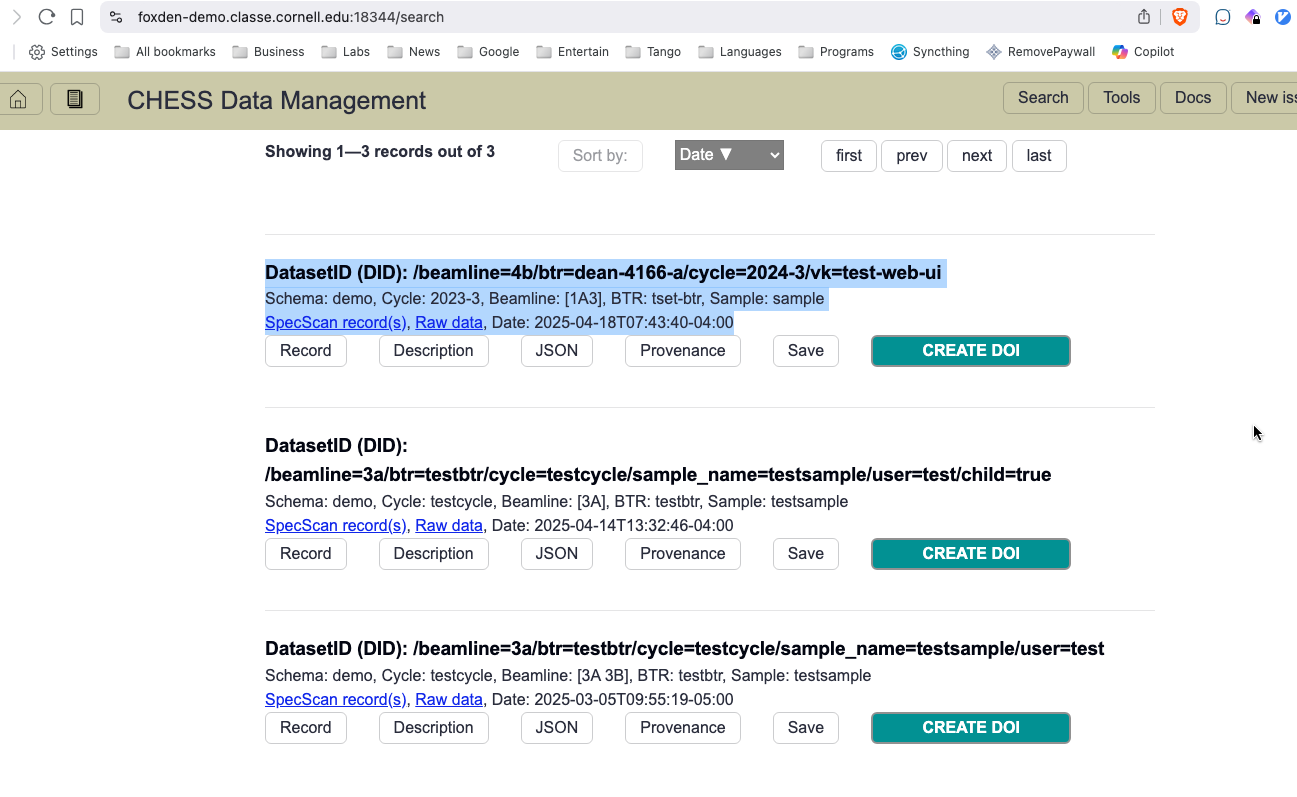FOXDEN web tutorial
In this tutorial we will walk through FOXDEN infrastructure. The current system consists of loosely coupled services which helps you organize your (meta-) data and provide traceability of your analysis workflows from acquiring the data to final physics analysis, including DOI publication.
FOXDEN provides web UI and Command Line Interface (CLI).
FOXDEN web interface
For our tutorial we will use a demo version of FOXDEN infrastructure. We will also rely on set of pre-populated records available at FOXDEN demo repository
To proceed please navigate to this foxden-demo URL and follow these steps:
Setup VPM or SSH tunnel for remote access
If you reside outside of lab network you may need to run VPN or ssh tunnel. Here is a simple command you need to use from your terminal
ssh -L LOCAL_PORT:foxden-dev:REMOTE_PORT USER@lnx201.classe.cornell.edu
please replace USER with your lab user name, and use any number for
LOCAL_PORT, e.g. 9001. The REMOTE_PORT you will need to know.
You may use a CLASSE VPN instead or any other VPN software of your choice to access CLASSE nodes.
Authentication page
First time you access FOXDEN you’ll be prompted for your CLASSE credential via FOXDEN authentication page:
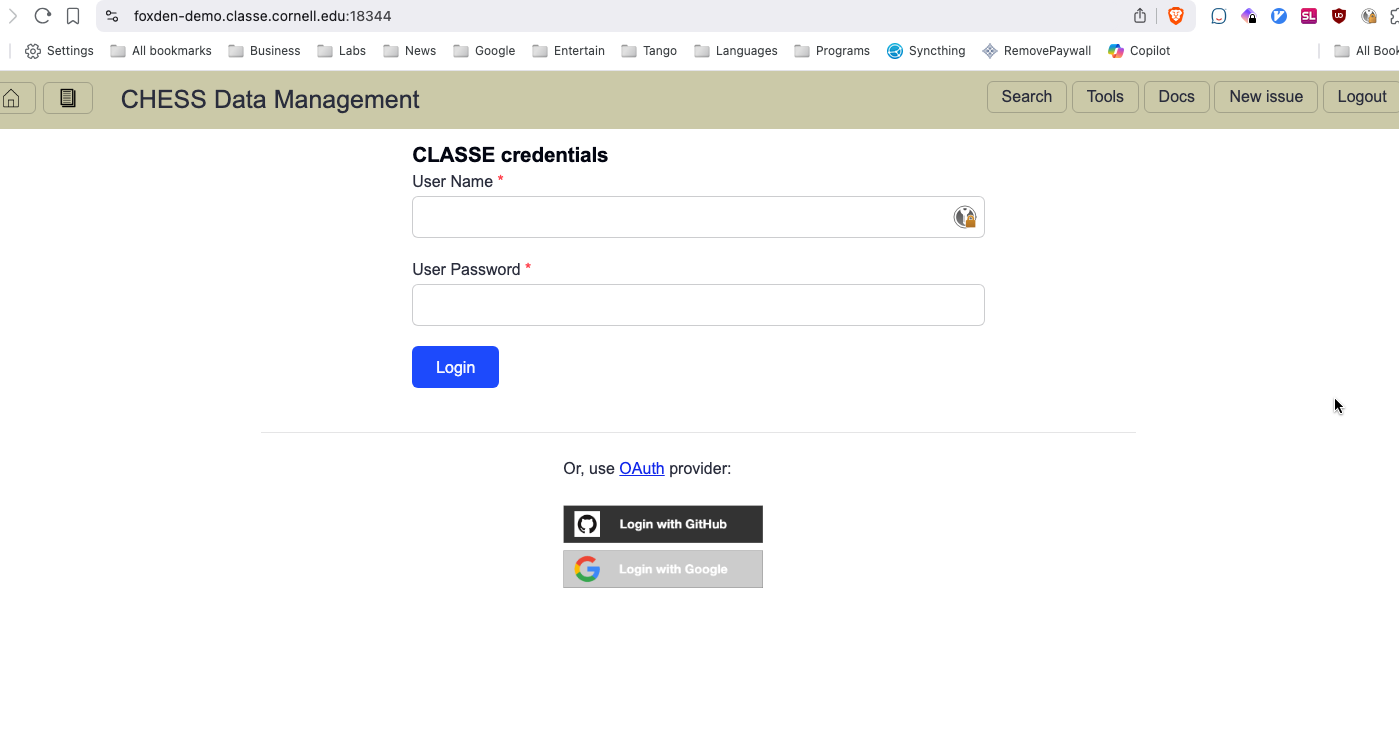
Main (dataset table) page
After that, you will be navigated to main FOXDEN page which will show available datasets:

Services page
FOXDEN provides many services which are available from services page
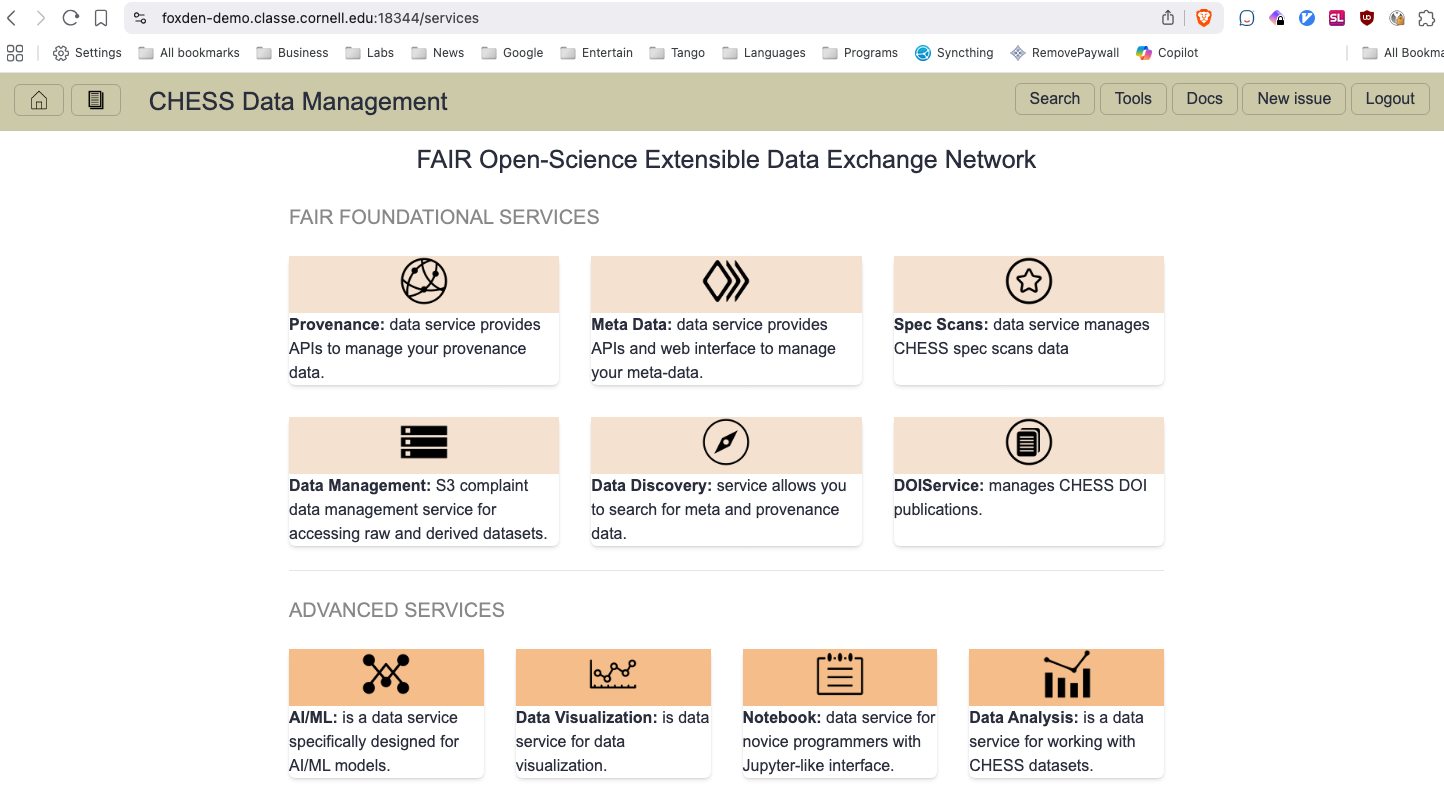
Metadata service
One of the many FOXDEN services is Metadata services. It provides a web form to inject your metadata record:
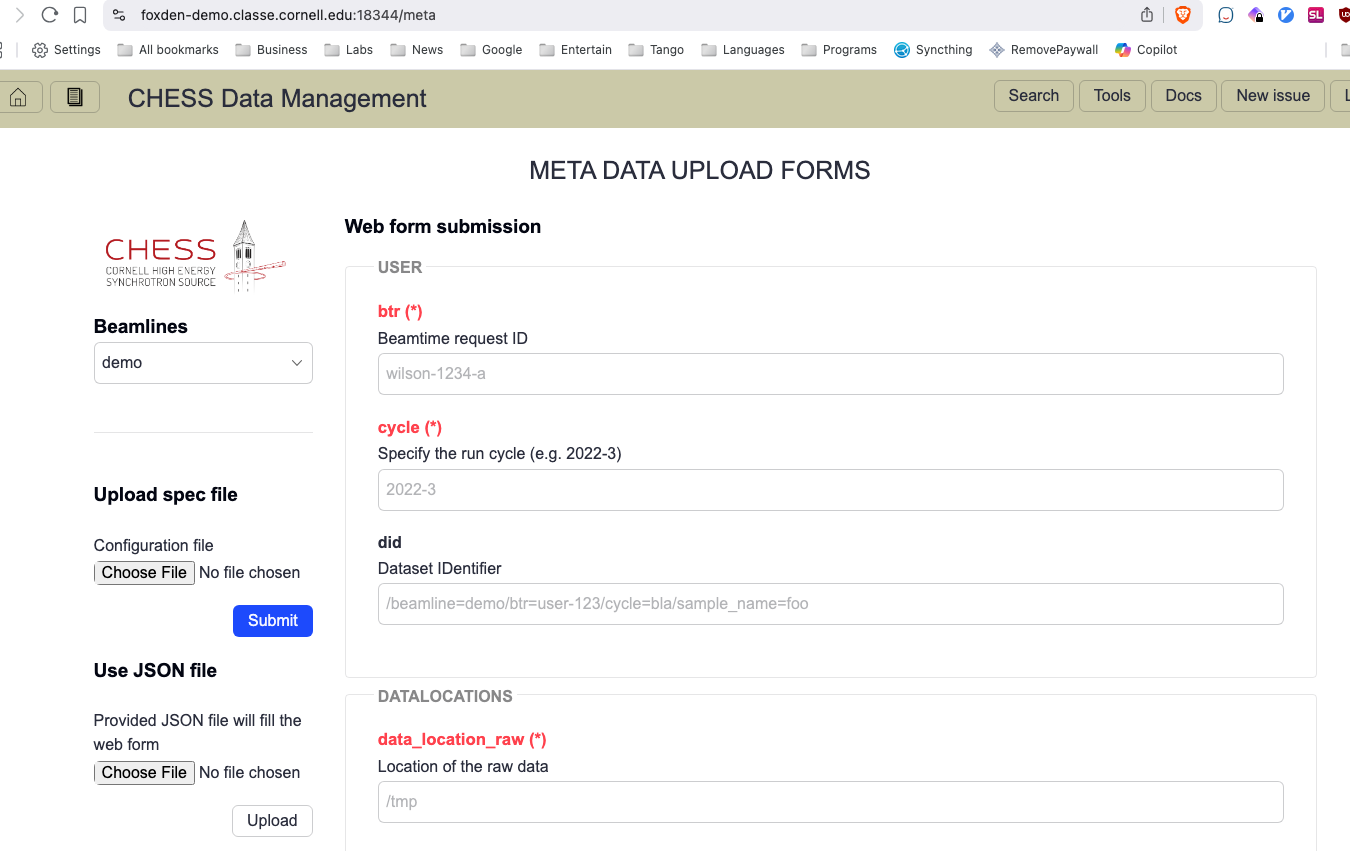
Once we’ll inject the metadata record you’ll be given either success or failure pages.
Here is an example of success page(s) where you can see your record details:
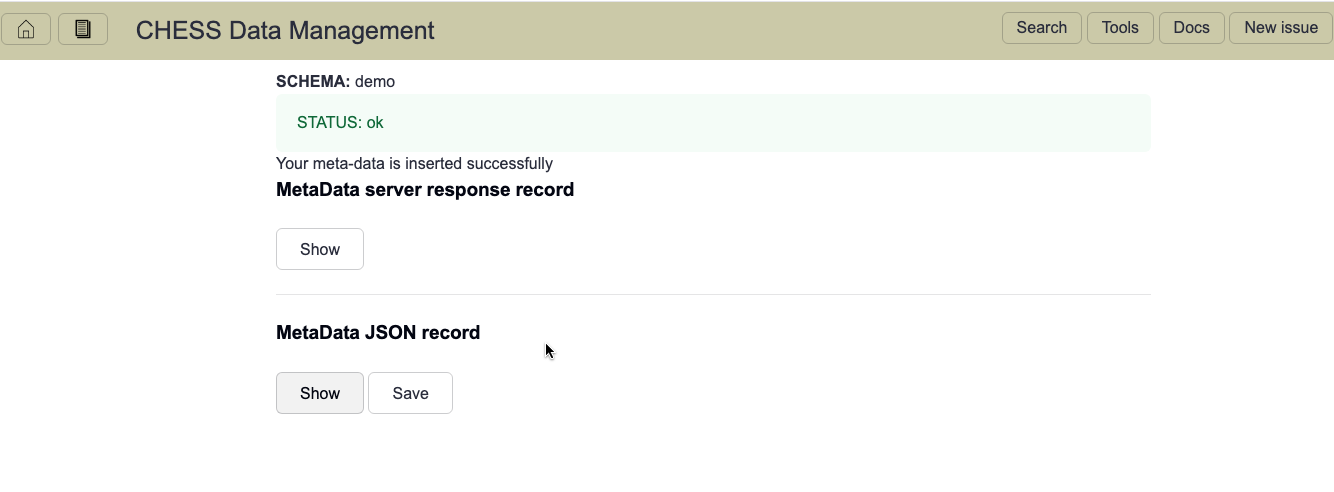
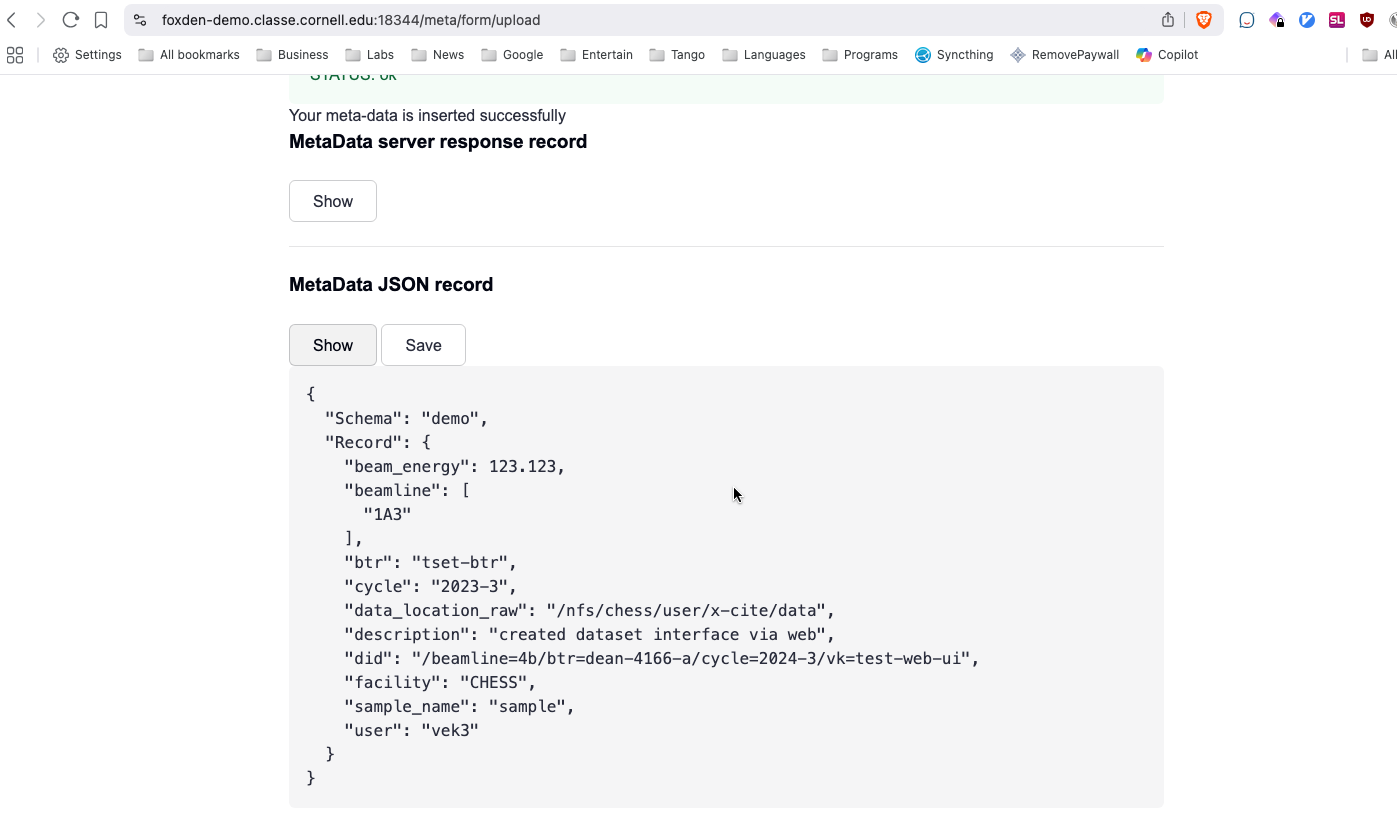
On failure page you’ll be given some details of failed injection

Search page
On FOXDEN search page you will be prompted to provide your query

And, there is a minimal help to get you started
A simple FOXDEN query is {} which means no conditions and it
return all metadata record
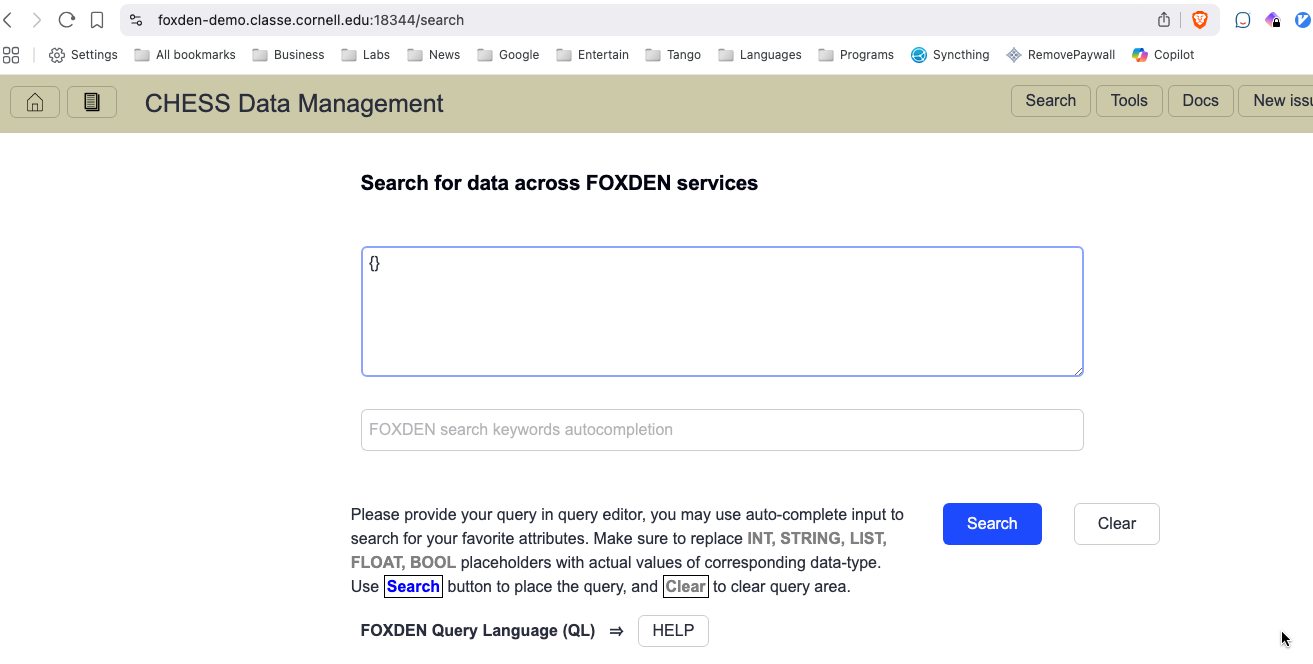
For more complicated query please refer to help section of search page
Results page
This is an example of results page showing few metadata records
